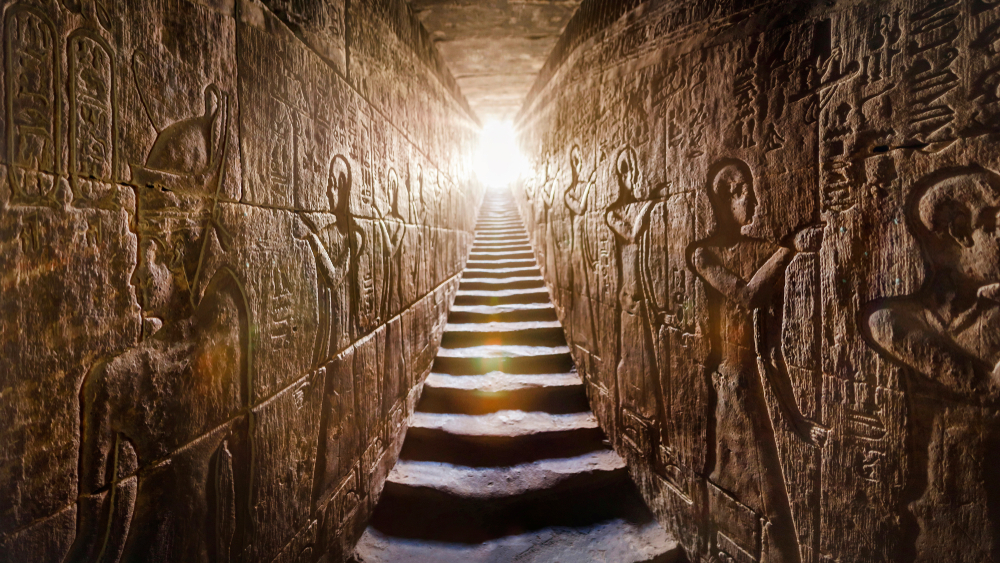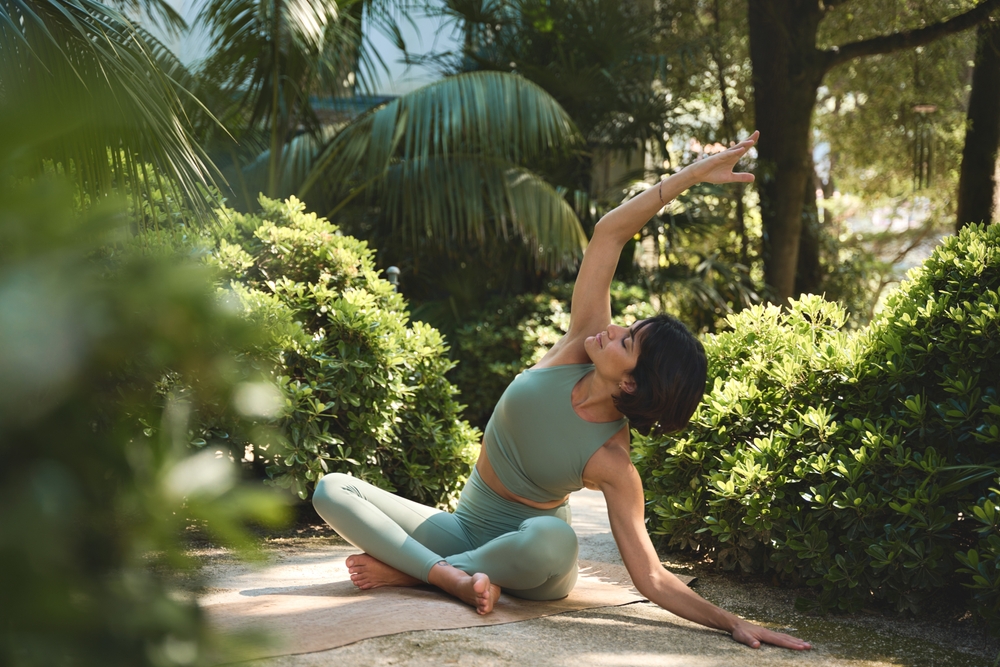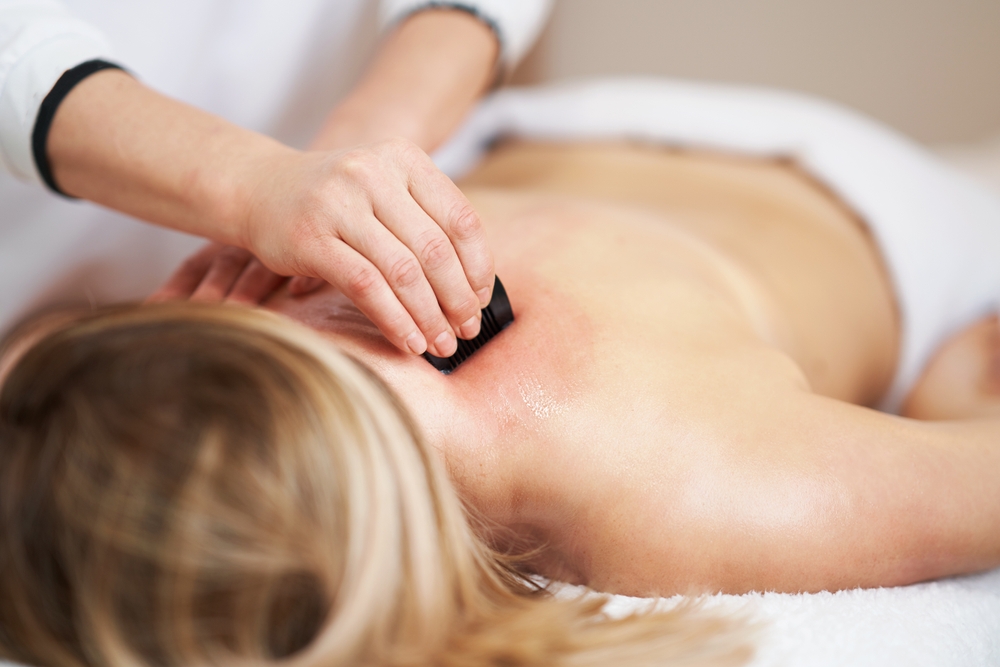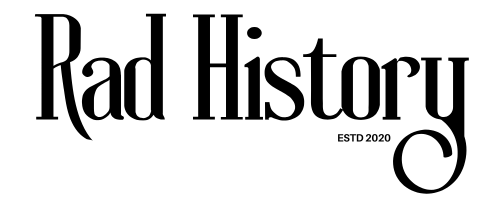You can barely open your phone these days without being gently reminded to hydrate, meditate, and maybe throw some ashwaganda into your smoothie. From wearable stress trackers, to full-moon cacao ceremonies, we’re living in the golden age of wellness – sprawling, incense-scented empire promising to help us optimize, align, and glow from the inside out.
But, most of today’s trending wellness products aren’t anything new. A surprising amount have roots that go way, way back. Long before influencer culture and $30 yoga mats, ancient civilizations were already deep in the business of prevention.
Egypt: Priests, Plants and Purification
The Original Holistic Outlook
When you think of ancient Egypt, your mind probably goes straight to pyramids, pharaohs, and the occasional mummy-in-a-museum moment. But behind the gold masks and grand tombs was a civilization deeply invested in health, and not just in terms of treatment. Egyptians took prevention seriously. In fact, they might’ve been some of the earliest champions of lifestyle medicine, even if their version came with a bit more linen and a lot more incense.
Medicine in ancient Egypt wasn’t a separate science, it was woven into the spiritual and social fabric of daily life. The priests who performed rituals in temples were often the same people prescribing treatments. Health wasn’t just physical; it was moral, environmental, cosmic. You didn’t just fall ill because of germs (they didn’t know about those yet), you fell ill because something had fallen out of balance in your body, spirit, or environment.
Diet, Detox and a Side of Garlic
They were big on diet as a way to keep this internal balance in check. Onions and garlic were basically medicinal staples, believed to boost immunity and ward off disease. Honey was slathered on wounds for its antibacterial powers long before someone stuck it in a jar and called it “manuka.” And beer? Medicinal. (Okay, fermented barley and herbs – but still.)

Hygiene was another cornerstone. Egyptians bathed daily (in the desert, no less), used natural oils to protect their skin, and practiced regular body cleansing rituals. Enemas were popular, and prescribed often. Some texts even detail specific times of year to perform this “internal cleansing”. Were these the original detox cleanses?
Papyrus as Prescription Pad
And then there were the herbal prescriptions, meticulously recorded in medical texts like the Ebers Papyrus (one of the oldest known medical documents, dating back to around 1550 BCE). Think of it as the world’s first wellness manual covering everything from tumors to toenail issues, with a heavy emphasis on prevention, maintenance, and the power of plants.
All of this suggests a culture that didn’t just wait for illness to strike – they planned around it. They took steps to keep the body, mind, and spirit in alignment. Today we might call that “biohacking” or “functional wellness”. Back then, it was just smart living.
India: Ayurveda and the Art of Living
Life Lessons from 3,000 Years Ago
Long before wellness retreats were selling “dosha-balancing” smoothies at $18 a pop, India had already developed a full-spectrum, fine-tuned system of preventative medicine. Ayurveda literally means the knowledge of life. Not the knowledge of illness or the knowledge of medicine, but life. How to live well, stay well, and align your body, mind, and spirit with the rhythms of nature.
Forget quick fixes, Ayurveda is built for daily use, not just in times of crisis. The goal? Swasthya – a state of equilibrium where everything hums along smoothly: digestion, sleep, immunity, emotions, even your thoughts. If that sounds suspiciously like the promises on your last wellness podcast ad, you’re not wrong. This system was biohacking before the term was even created.
Meet your Doshas: The Original Body Types
Central to Ayurvedic thinking is the idea of doshas – Vata (air + ether), Pitta (fire + water), and Kapha (earth + water). Everyone has a unique blend of these energies, and staying healthy means keeping them in balance. Too much Vata? You might get anxious, dry-skinned, and scattered. Too much Kapha? Think sluggish, heavy, congestion central.
In the Ayurvedic model, everything affects your balance: your diet, your sleep, your mood, even the season. So instead of waiting to get sick, the idea was to adjust before you get there. Eat warming foods in winter, cooling foods in summer. Avoid overstimulation if you’re already feeling wired. And if your digestion’s off, your whole system is basically a no-fly zone.
Rituals, Routines, and Really Good Oil
Ayurveda isn’t just about what you eat, it’s how you live. The daily routine, or dinacharya, includes tongue scraping, oil pulling, warm water on waking, self-massage (abhyanga), yoga, and meditation, all designed to maintain balance and flow. This was prevention through rhythm. Small, consistent rituals to keep the system running smoothly, rather than waiting for a breakdown and relying on medical intervention.

These practices weren’t indulgent, they were foundational. Just like brushing your teeth, but for your whole system. And now, thousands of years later, they’re showing up in wellness routines across the globe. (You know that influencer who dry brushes and oil massages before coffee? Yeah, she’s just doing what ancient sages recommended in Sanskrit.)
Spices, Science and a Side of Skepticism
Ayurveda’s herbal and dietary toolkit is vast: turmeric for inflammation, triphala for digestion, ashwagandha for stress. Plants and spices you’ve probably seen lining the shelves of your local health food store, or turned into shiny capsules online.
What’s interesting is how modern science is catching up. Many of these remedies have been studied and shown to have pharmacological benefits. But, Ayurveda isn’t just a collection of herbal hacks. It’s a whole system, and isolating one element without the context kind of misses the point.
Ancient Blueprint, Modern Buzzword
So much of what Ayurveda teaches us still rings true in our hyperconnected, overstimulated lives. Honor your rhythms. Eat with the seasons. Prioritize rest. Pay attention to your body and respond to its needs before it’s screaming at you. But it’s not about rejecting modern medicine, just remembering that health isn’t something to chase after when it slips away, but to live into, daily. And whether it’s oil pulling before Zoom calls or sipping golden milk as a nightly ritual, let’s be honest: ancient India might have nailed the wellness brief before it was even a thing.
China: Qi, Balance and Botanical Wisdom
When Health Was All About the Flow
In Traditional Chinese Medicine (TCM), health isn’t just about what’s going on in your gut or your blood work, it’s about flow. Flow of energy. Flow of breath. Flow of bodily fluids. (Okay, not the prettiest phrase, but stick with me). Thousands of years before we were tracking heart rate variability or syncing workouts to our menstrual cycles, Chinese physicians were mapping out how energy, known as Qi, moved through the body.
Qi (pronounced chee) is the vital life force that animates you, keeps you functioning, and ideally, moving smoothly through the world. When Qi is strong and balanced, you’re well. When it’s blocked, deficient, or chaotic, then that’s when problems show up. The goal of TCM? Keep Qi flowing. Prevention, in this case, is about keeping your internal rivers clear and your body systems in harmony.
Yin, Yang, and Staying in Sync
The entire system is built on balance – between yin and yang, hot and cold, rest and action, dryness and damp. You weren’t just treated based on symptoms, but on your specific pattern – your unique constellation of imbalances.
If your system leaned too “yang” (hot, dry, overactive), cooling foods and calming practices were prescribed. Too much “yin” (cold, slow, damp)? Time to warm things up and get things moving. Every decision – food, herbs, activity level, even sleep timing – was customized to your current state and the season you were in. It’s the original form of personalized medicine, with a practitioner reading your tongue and feeling your pulse like a human diagnostic scanner.
Herbs, Needles, and Movement as Medicine
The TCM pharmacy is a massive botanical treasure chest of roots, fungi, flowers, barks and minerals, combined into elaborate formulas to nudge the body back to balance. Ginseng for vitality, licorice root for harmonizing blends, reishi mushroom for immunity and longevity. Sound familiar? That’s because a lot of these ingredients are now making cameo appearances in modern supplements and wellness drinks.
Acupuncture, which was once dismissed as “woo woo” in the west, is now used by elite athletes, fertility clinics and stressed-out office workers alike. And let’s not forget Tai Chi and Qi Gong, gentle movement systems designed to keep energy flowing and joints mobile. Basically, preventative exercise without needing a foam roller and hype playlist.
Prevention as Philosophy, Not Panic
Unlike the Western model of health as something to intervene with when it breaks, TCM starts from the idea that imbalance creeps in slowly, often before symptoms are even noticeable. The best doctor wasn’t the one who treated your illness, but the one who kept you from getting sick in the first place. (Some emperors even paid their physicians on a subscription basis, but only while they remained healthy. If you got sick, your doc wasn’t getting paid – so no pressure.)
Modern echoes of TCM are everywhere: seasonal eating, energy healing, functional tonics, and in the ideas that health isn’t just a physical issue. They recognized that health spans across the emotional, the mental and is deeply affected by the environmental.
Ancient Flow, Modern Glow
In a world obsessed with productivity and performance, TCM reminds us that prevention isn’t about panic or perfection – it’s about rhythm. It’s about checking in before burnout, nourishing before depletion, and adjusting before imbalance becomes illness.

So whether you’re brewing up a mushroom latte or seeing your acupuncturist for stress management, know that you’re tapping into a system with more than 2,000 years of preventative wisdom.
Greece: Balance, Baths, and the Birth of “Food as Medicine”
Where Wellness Got Its Western Accent
If ancient India gave us ritual, and China gave us energy flow, then ancient Greece gave us rationalism, that heady mix of observation, philosophy, and the very beginnings of what would one day become Western medicine. But before Hippocrates’ name got slapped onto every medical school oath, he and his fellow thinkers were already deep into the prevention game.
The Greeks weren’t just curious about disease; they were fascinated by all things health. How to preserve it, how to live well, and how to align human bodies with the natural world. Their guiding principle was that health wasn’t just the absence of illness, it was a dynamic state of balance. This balance was to be maintained through lifestyle, environment, and behavior. This outlook laid the foundation for modern holistic health.
Hippocrates: The Original Wellness Guru
You’ve probably heard the quote: “Let food by thy medicine and medicine be thy food.” That’s Hippocrates, a 5th century BCE physician who believed that most illnesses stemmed from diet, lifestyle and environment, not divine punishment or bad luck. Pretty radical stuff for the time.
He promoted moderate exercise, clean air, good sleep, and, crucially, eating in tune with the seasons and your body’s constitution. He wasn’t prescribing pharmaceutical-grade kale smoothies, but the philosophy was there: food and lifestyle first, intervention second.
Hippocratic medicine viewed the body through the lens of the four humors: blood, phlegm, yellow bile, and black bile. Health meant keeping these in balance through diet, bathing, exercise, and even adjusting your living conditions based on the weather. (If you’ve ever been grumpy and blamed it on humidity, that’s some Greek-style thinking.)
The Gym, The Spa, and The Sacred Self-Care Routine
We know that the Greeks were pretty serious about physical movement. But the gymnasium wasn’t just for biceps, it was a civic institution for health and self-discipline. You exercised for strength, but also for digestion, mental clarity, and emotional regulation.
Modern Preventive Wellness Practices and Their Benefits
| Practice | Description | Primary Benefits |
|---|---|---|
| Annual Health Screenings | Routine exams including bloodwork, cancer screenings, and physicals | Early detection of disease, improved long-term outcomes |
| Nutritional Counseling | Working with dietitians to create balanced meal plans | Weight management, reduced risk of chronic conditions like diabetes |
| Stress Reduction Techniques | Meditation, yoga, and breathwork practices | Lower blood pressure, reduced anxiety, improved mental clarity |
| Vaccinations | Immunizations for flu, shingles, COVID-19, and others | Prevention of contagious and potentially life-threatening illnesses |
| Regular Physical Activity | Incorporating aerobic, strength, and flexibility exercises | Cardiovascular health, improved mobility, reduced risk of depression |
| Sleep Hygiene | Creating consistent routines and environments for quality sleep | Cognitive function, immune support, reduced risk of chronic disease |
| Preventive Dental Care | Cleanings, fluoride treatments, oral exams | Early cavity detection, gum disease prevention, systemic health support |
| Mental Health Screenings | Periodic check-ins with therapists or counselors | Early intervention for anxiety, depression, and emotional well-being |
| Smoking & Alcohol Cessation Support | Counseling, nicotine replacement therapy, rehab programs | Lower cancer risk, improved organ function, longer lifespan |
| Digital Health Monitoring | Use of wearables to track heart rate, sleep, blood sugar, etc. | Real-time health insights, behavior modification, early warning signs |
And then there were the baths. Public, steamy, ritualistic affairs where people cleansed, relaxed, socialized, and rebalanced. These were as much about mental health as they were about hygiene. Today’s spa culture? Still borrowing heavily from ancient Greek (and Roman) ideas of cleansing as a form of medicine.
They even practiced early forms of mind-body therapy. Music, poetry, and philosophy were considered vital to a well-functioning soul. Mental and physical health weren’t siloed, they were closely connected.
Prevention Over Prescription
In Greek thinking, a good physician was more of a guide than a fixer. Their job was to help the patient live in harmony with nature, to offer advice on how to prevent imbalance rather than swoop in with a last-minute cure. Prevention wasn’t a luxury. It was the default setting.
That idea that health is something to maintain daily, through mindful living has come roaring back in recent decades under the banner of wellness. From Mediterranean diets to cold plunges, journaling, forest walks, and gut-friendly eating, we’re significantly influenced by what the Greeks were up to 2,500 years ago.
Ancient Insights, Modern Headlines
What’s striking is how modern science has come to support many of these ancient Greek philosophies. Movement improves cognition. Nature boosts mood. Mediterranean-style diets reduce chronic disease risk. Rest and stress management aren’t just nice extras, they’re essential for long-term health. So the Greeks were on to something.

While we may have swapped tunics for tech, the core wisdom still holds: health is a daily practice, a balance, a rhythm. And, most importantly, a choice we keep making, long before the prescription pad comes out.
How Has Ancient Wisdom Become the New Wellness?
You could say that the wellness industry has a flair for the dramatic. Crystals, adaptogens, infrared saunas, mushroom lattes, “gut-friendly” everything – all served up with sleek fonts and promises of transformation. But peel back the branding, and much of what’s trending today would feel oddly familiar to a priest in ancient Egypt, a Vedic sage, or a Hippocratic healer. Even the idea of listening to your body isn’t a new revelation, it’s just been modernized.
The Science Catch-Up Game
Here’s the twist: as high-tech as we like our health gadgets to be, modern research is increasingly backing what ancient cultures just seemed to know.
- Turmeric has anti-inflammatory compounds.
- Tai Chi improves balance and cognitive function in older adults.
- Daily routines (hello, dinacharya) are linked to better sleep and lower stress.
- Meditation reshapes the brain.
- Diet diversity and fermented foods really do support gut health.
This isn’t mysticism; it’s empirical validation – a reminder that just because something is old, doesn’t mean that its outdated. Sometimes science just takes a few thousand years to catch up.
What We Lost in Translation
Still, in the rush to modernize and monetize, we’ve sometimes missed the point. Ancient systems weren’t just about isolated hacks. They were holistic, not just in the trendy, plant-based, green-juice sense, but truly whole: body, mind, spirit, environment, season, even ethics.
They made you ask yourself questions.
- Are you sleeping in tune with the sun?
- Are you eating for your constitution?
- Are you living in a way that honors your physical and emotional rhythms?
Today, we often strip those ideas down to single ingredients or buzzwords, and wonder why they don’t land the same.
Reclaiming Prevention – Without the Pressure
Here’s the good news: ancient doesn’t mean inaccessible. You don’t have to become a monk or live in a cave to practice preventative health. You’re probably already doing some version of it when you meditate, walk outside, add spices to your food, or wind down instead of pushing through.
The real challenge isn’t knowing what to do, it’s doing it consistently, and doing it in a way that fits your life. Not for the aesthetic. Not to optimize your every cell. But because prevention isn’t punishment, it’s proactive kindness. Ancient wisdom understood that.
Old Roots, New Reality
We live in a time of unprecedented access to knowledge, tools, and data. But maybe the next frontier isn’t in finding something new to fix us. Maybe it’s in remembering what already worked. So whether you’re sipping golden milk, getting acupuncture, or just finally listening to your body’s call for rest, you’re not behind. You’re just part of a very old tradition: keeping yourself well, before the wheels fall off. And if it worked for the ancients then there’s a good chance it can still work now.

In a world chasing the next superfood, the latest wearable, or the most efficient self-care routine, it’s easy to forget that prevention is not a trend. It’s an ancient instinct which has been guiding human health for millennia.
From the herbal formulas of ancient China to the daily oil massages of Ayurveda, from the elemental balances of Egyptian healing to the gymnasiums and grain bowls of Greece – the blueprint for long-term wellness has been quietly sitting in history books, clay tablets and scrolls this whole time. We’ve simply changed the packaging for the modern day.
So maybe the next time you reach for that new supplement blend or head out on a mindful walk, you’ll remember a few things.
You’re not just doing what’s trendy.
You’re tapping into something timeless.
A 5,000-year-old tradition that says: Take care now, so you don’t have to fix it later.








